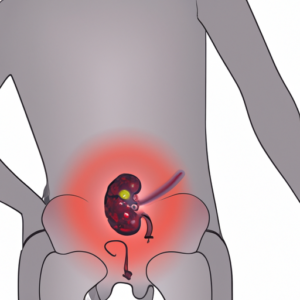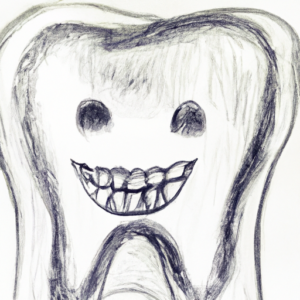Caries, also known as tooth decay or cavities, is a prevalent dental problem that affects people of all ages. It is essential to understand the symptoms, causes, and prevention methods associated with caries to maintain good oral health. In this comprehensive guide, we will delve into the world of caries, exploring its diagnosis, treatment options, and the link between oral health and its development. By gaining a deeper understanding of caries, we can take the necessary steps to prevent its occurrence and ensure a healthy smile for years to come.
1. "Understanding Caries: Symptoms, Causes, and Prevention"
Caries, commonly known as tooth decay, is a prevalent dental problem that affects people of all ages. It is a result of the demineralization of tooth enamel, leading to the formation of cavities. Understanding the symptoms, causes, and prevention of caries is crucial for maintaining oral health and preventing further complications.
Symptoms of caries can vary depending on the severity of the decay. In the initial stages, individuals may not experience any noticeable symptoms. However, as the decay progresses, common signs may include tooth sensitivity, toothache, visible holes or pits in the teeth, and dark or white spots on the tooth surface. It is important to note that caries can develop in any tooth, including those with fillings or dental restorations.
Several factors contribute to the development of caries. The primary cause is the presence of plaque, a sticky film of bacteria that forms on the teeth. When we consume sugary or starchy foods, the bacteria in plaque produce acids that attack the tooth enamel. Over time, this process weakens the enamel and leads to the formation of cavities. Poor oral hygiene practices, such as inadequate brushing and flossing, can accelerate the progress of caries.
Prevention is the key to combatting caries and maintaining good oral health. Regular dental check-ups are essential for early detection and treatment of cavities. Dentists can perform thorough examinations, including X-rays, to identify caries in their early stages. Additionally, professional dental cleanings help remove plaque and tartar buildup, reducing the risk of caries development.
Practicing good oral hygiene is crucial in preventing caries. Brushing the teeth at least twice a day with fluoride toothpaste helps remove plaque and strengthen tooth enamel. Flossing daily is equally important to clean areas that a toothbrush cannot reach, such as the spaces between teeth. Incorporating an antimicrobial mouth rinse into the oral care routine can also provide an extra layer of protection against caries-causing bacteria.
A balanced diet plays a significant role in preventing caries. Limiting the consumption of sugary and acidic foods and beverages reduces the exposure of teeth to harmful acids. Instead, opt for a diet rich in fruits, vegetables, whole grains, and dairy products, as they contain essential nutrients that promote oral health.
In conclusion, understanding the symptoms, causes, and prevention of caries is vital for maintaining optimal oral health. By recognizing the early signs of caries, individuals can seek timely treatment and prevent further complications. Practicing good oral hygiene and adopting a healthy diet are key preventive measures that can significantly reduce the risk of caries development. Remember
2. "Diagnosis and Treatment of Caries: A Comprehensive Guide"
Diagnosis and Treatment of Caries: A Comprehensive Guide
Caries, commonly known as tooth decay or cavities, is a prevalent oral health problem that affects people of all ages. It is caused by the demineralization of tooth structure due to acid-producing bacteria in the mouth. If left untreated, caries can lead to severe tooth damage and even tooth loss. Therefore, early diagnosis and prompt treatment are crucial in managing this condition effectively.
Diagnosing caries involves a combination of clinical examination and diagnostic tools. Dentists evaluate the patient’s medical history, perform a thorough visual examination, and inquire about any symptoms or discomfort they may be experiencing. They also use a dental explorer, a small metal instrument, to probe the tooth surfaces for soft spots, which could indicate caries formation.
In addition to the visual examination, dentists rely on radiographs or X-rays to detect caries that may not be visible to the naked eye. X-rays allow dentists to evaluate the extent of the decay, determine if it has reached the inner layers of the tooth, and assess the overall health of the surrounding structures. These diagnostic tools, along with the dentist’s expertise, enable accurate diagnosis and the development of an appropriate treatment plan.
The treatment approach for caries depends on various factors, including the severity of the decay, the patient’s age, and their overall oral health. In the case of early-stage or mild caries, preventive measures can be employed to halt or reverse the progression of the decay. This often involves implementing proper oral hygiene practices, such as regular brushing with fluoride toothpaste, flossing, and using mouth rinses. Dentists may also recommend dietary modifications, such as reducing sugar intake, as sugar is a primary contributor to caries development.
For more advanced cases, restorative treatments are necessary. This typically involves the removal of decayed tooth material and the placement of a dental filling. The filling material, such as composite resin or amalgam, is used to restore the shape and function of the affected tooth. In cases where the decay has reached the inner layers of the tooth, root canal treatment may be required to remove the infected pulp and save the tooth from extraction.
In severe cases where the tooth structure is extensively damaged, extraction may be the only viable option. However, dentists always strive to preserve natural teeth whenever possible, and various tooth replacement options, such as dental implants or bridges, can be considered to restore the patient’s smile and chewing function.
Prevention plays a crucial role in managing caries effectively. Regular dental check-ups and professional cleanings are essential for early detection of caries and the implementation of
3. "Exploring the Link Between Oral Health and Caries Development"
When it comes to oral health, one of the most common concerns that individuals face is the development of caries. Caries, also known as tooth decay or cavities, is a widespread dental problem that affects individuals of all ages. Understanding the link between oral health and caries development is crucial in order to prevent and effectively treat this condition.
Caries occurs when the natural bacteria present in our mouths interact with the sugars and carbohydrates in the foods we consume, resulting in the production of acids. These acids then attack the enamel, the protective outer layer of our teeth. Over time, if left untreated, this acid erosion can lead to the formation of cavities and the eventual destruction of tooth structure.
Maintaining good oral hygiene practices plays a significant role in preventing caries development. Regular brushing and flossing help remove plaque and food particles from the surfaces of the teeth, reducing the risk of acid production. Additionally, using fluoride toothpaste and mouthwash can strengthen the enamel and make it more resistant to acid attacks.
Diet also plays a crucial role in the development of caries. Consuming excessive amounts of sugary and acidic foods and beverages increases the risk of tooth decay. These substances provide fuel for the bacteria in our mouths, leading to a higher production of acids. It is important to limit the intake of these harmful substances and opt for a balanced diet that includes a variety of nutritious foods.
Furthermore, the presence of certain risk factors can contribute to the development of caries. Individuals with dry mouth conditions, such as those caused by certain medications or medical conditions, have a higher risk of caries due to reduced saliva flow. Saliva plays a vital role in neutralizing acids and remineralizing the teeth. Additionally, individuals with orthodontic appliances or dental restorations may face challenges in maintaining proper oral hygiene, increasing their susceptibility to caries.
Regular dental check-ups are essential for the early detection and treatment of caries. Dentists can perform thorough examinations, including visual inspections, dental x-rays, and other diagnostic tests, to identify caries in their early stages. Early diagnosis allows for less invasive treatment options, such as dental fillings or sealants, to prevent further decay and preserve the tooth structure.
In conclusion, understanding the link between oral health and caries development is crucial in maintaining a healthy smile. By practicing good oral hygiene, adopting a balanced diet, and addressing any risk factors, individuals can minimize their chances of developing caries. Regular dental check-ups and early intervention are key to preventing the progression of caries and preserving the overall oral health.






